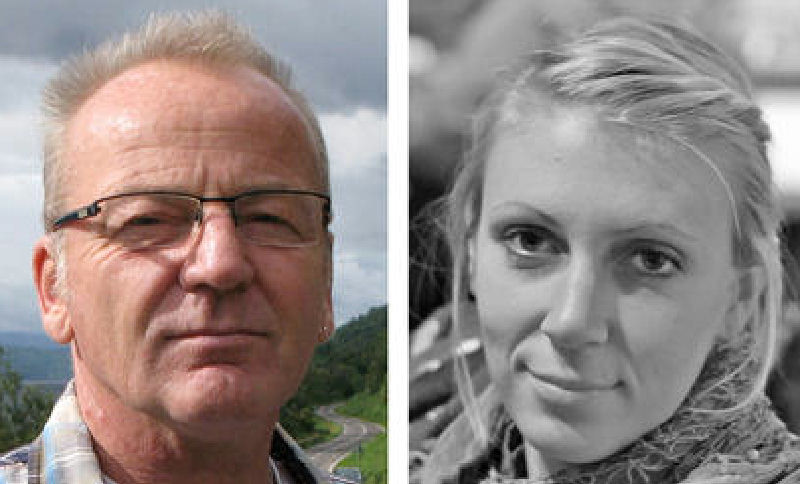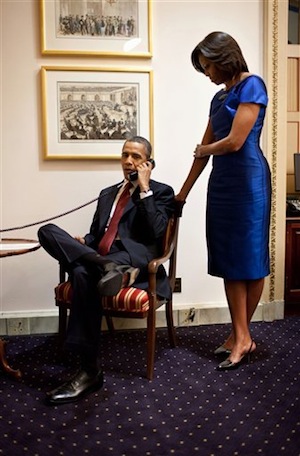WASHINGTON — The Navy SEAL operation that freed two Western hostages in Somalia is representative of the Obama administration’s pledge to build a smaller, more agile military force that can carry out surgical counterterrorist strikes to cripple an enemy.
That’s a strategy much preferred to the land invasions of Iraq and Afghanistan that have cost so much American blood and treasure over the past decade. The contrast to a full-bore invasion is stark: A small, daring team storms a pirate encampment on a near-moonless night, kills nine kidnappers and whisks the hostages to safety.
Special operations forces, trained for such clandestine missions, have become a more prominent tool in the military’s kit since the Sept. 11, 2001, attacks that led to the ongoing war in Afghanistan. The administration is expected to announce Thursday that it will invest even more heavily in that capability in coming years.
The SEAL Team 6 raid in Somalia, which followed last May’s operation that killed al-Qaida leader Osama bin Laden, has political dimensions in an election year.
It gave an added punch to the five-state tour President Barack Obama began the day after he delivered his State of the Union speech. Obama did not mention the raid that was unfolding during his Tuesday night address, but he dropped a hint upon arriving in the House chamber by telling Defense Secretary Leon Panetta, “Good job tonight.”
The SEAL mission also helps soften the blow of defense cuts the White House is seeking in spite of a chorus of criticism by hawkish lawmakers. Not to be discounted is the feel-good moment such missions give the American public, a counterbalance to the continued casualties in Afghanistan.
After planning and rehearsal, the Somalia rescue was carried out by SEAL Team 6, officially known as the Naval Special Warfare Development Group, according to two U.S. officials who spoke on condition of anonymity to discuss a secret mission. It was not clear whether any team members participated in both the raid in Somalia and the bin Laden mission in Pakistan.
The SEALs parachuted from U.S. Air Force special operations aircraft before moving on foot, apparently undetected, to the outdoor encampment, two officials said. They found American Jessica Buchanan, 32, and Poul Hagen Thisted, a 60-year-old Dane, who had been kidnapped in Somalia last fall.
The SEALs encountered little resistance from the kidnappers during the operation, which lasted about an hour to an hour and a half, two U.S. officials said. Only one of the attackers fired back and was quickly subdued, one official said. The rest were believed killed, though officials did not rule out the possibility of an escape, as aerial surveillance of the scene was hampered on the cloudy, dark night.
Army special operations MH-60 Black Hawk helicopters then swooped in to the subdued encampment near the town of Adado to carry away the SEALs and hostages.
The captors were heavily armed and had explosives nearby when the rescuers arrived on the scene, Pentagon press secretary George Little said, but he was not more specific. Little declined to say whether there was an exchange of gunfire and would not provide further details about the rescue beyond saying that all of the captors were killed by the Americans.
The American raiders caught the kidnappers as they were sleeping after having chewed the narcotic leaf qat for much of the evening, a pirate who gave his name as Bile Hussein told The Associated Press by phone. Hussein said he was not present at the site but had spoken with other pirates who were. They told him that nine pirates had been killed in the raid and three were taken away, he said. However, two U.S. officials said no Somalis were captured.
Little said the decision to go ahead with the rescue was prompted in part by rising concern about the medical condition of Buchanan. He said he could not be specific without violating her privacy but did say U.S. officials had reason to believe her condition could be life-threatening.
Mary Ann Olsen, an official with the Danish Refugee Council, which employed Buchanan and Thisted in de-mining efforts in Somalia, said Buchanan was “not that ill” but needed medicine.
In the last week or so U.S. officials had collected enough information to “connect the dots” that led Obama to authorize the mission on Monday, Little said.
A Western official said the rescuers and the freed hostages flew by helicopter to Camp Lemonnier in the nearby Horn of Africa nation of Djibouti. The official spoke on condition of anonymity because the information had not been released publicly. A key U.S. ally in the region, Djibouti hosts the Combined Joint Task Force-Horn of Africa, a U.S.-led group organized under U.S. Africa Command.
A U.S. defense official said Thursday that Buchanan and Thisted had been flown to Naval Air Station Sigonella, on the Italian island of Sicily, for medical screenings and other evaluations before heading home. Buchanan’s family is meeting her at NAS Sigonella, which is the hub of U.S. Navy air operations in the Mediterranean and hosts an Italian air force base.
The mission was directed by Army Gen. Carter Ham, head of Africa Command, from his headquarters in Stuttgart, Germany. Panetta and other members of Obama’s national security team monitored the mission from the White House before traveling to the Capitol to attend Obama’s speech.
Minutes after Obama completed his State of the Union address he was on the phone with Buchanan’s father to tell him that his daughter was safe.
Several hostages were still being held in Somalia, including a British tourist, two Spanish doctors seized from neighboring Kenya and an American journalist kidnapped on Saturday.
Send questions/comments to the editors.




Comments are no longer available on this story